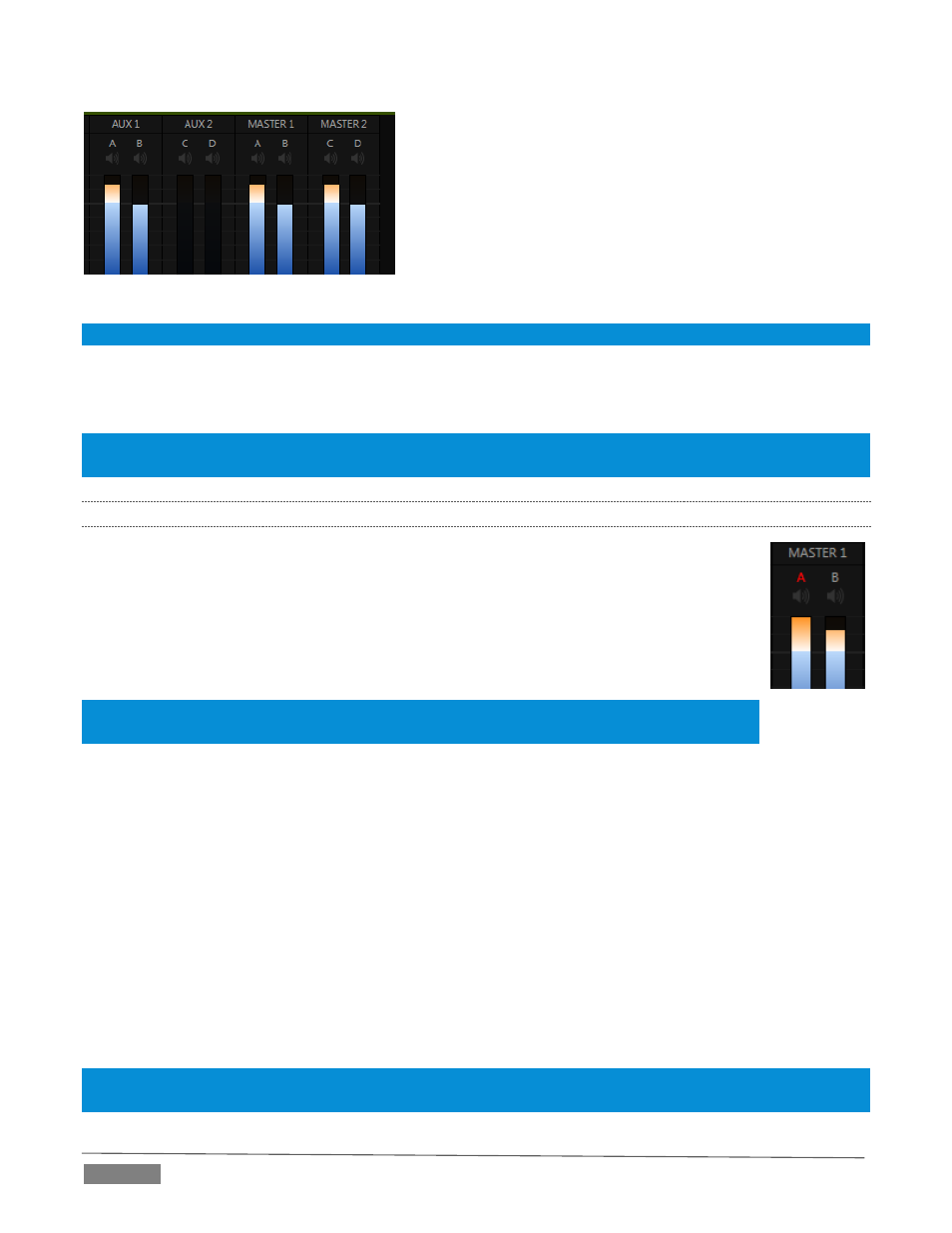1 headroom notes, 1 (headroom notes) – NewTek TriCaster Advanced Edition User Guide User Manual
Page 178

Page | 166
FIGURE 206
Hint: Shift + double click Volume knobs to restore their default values (0dB).
Settings in all of the control groups in this section (Figure 206) take effect downstream from all audio
sources, further modulating and processing audio sent to outputs as the Aux and Master mixes, for recording,
and for Internet streaming.
Note: Record and Stream are logical outputs with their own control groups in the Audio Mixer’s output section.
This allows them to be governed independently of other outputs that the same mixes may have been assigned to.
15.8.1
HEADROOM NOTES
In digital audio systems, signal levels that exceed maximum values are uniformly assigned the
maximum value, a condition known as “clipping”.
Clipping inevitably results in annoying audible issues. Worse, over-modulation that may not
be apparent while listening during live production may nonetheless appear in recorded files.
This is often true even when levels appear to be below the ceiling level (0dBFS, the maximum
allowable digital level).
Hint: TriCaster Advanced Edition notifies you when clipping has occurred by temporarily turning
the label for the problem channel red, as seen in Figure 207.
Due to this problem, digital audio system designs customarily allow substantial ‘headroom’ above the
benchmark ‘alignment level’, making over-modulation much less likely. Often this allowance seems high to
those familiar with analog audio systems; headroom levels between 18 and 24dB are not uncommon in
professional digital audio realms.
TriCaster allows for any preference in this regard, by its provision of separate Record (and Stream) level
controls discussed shortly. For example, dropping the Record slider to -20dBFS (our base recommendation,
by the way) approximates typical professional practice. This has no impact on levels at TriCaster’s audio
outputs, but all but ensures clipping in recorded files will be avoided.
Advanced users can thus record files conforming to regional standards or personal preference, substantially
reduce the possibility of audio clipping in recorded files, and even adjust the level on the fly if necessary.
The main point to remember from all of this is that for digital audio recording “less is often more”. When it
comes to levels, by all means go as high as necessary – but it’s equally practical to go no higher than necessary.
Hint: The Audio Mixer also provides Compressor/Limiters for each input and output. These can also be invaluable
in defeating clipping due to over-modulation.
FIGURE 207
